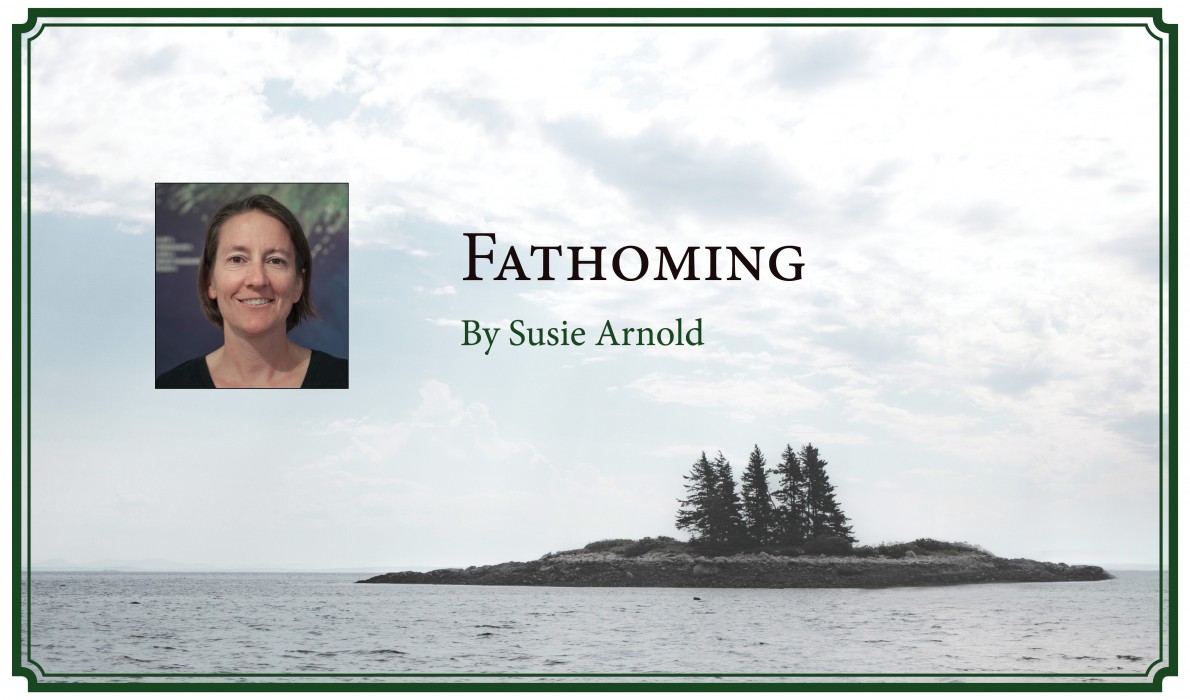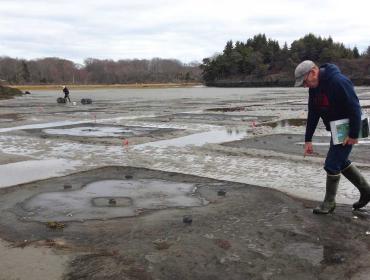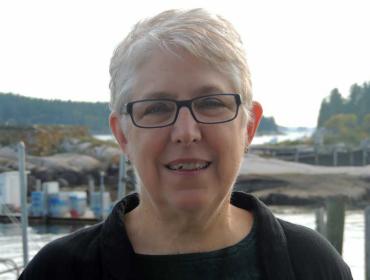Posted April 11, 2019
Last modified April 11, 2019
By Susie Arnold
The first day of the annual Maine Fishermen's Forum, held in early March, is traditionally "Shellfish Day," focusing on Maine's bivalve fisheries. Presentations covering wild harvested bivalves and farmed shellfish yielded valuable insights.
By commercial license numbers, the soft-shell clam is the state’s second largest fishery, following the lobster fishery. Shellfish had been second to lobster in landings value, but clams have fallen behind in recent years.
Washington County leads the state in clam landings, illustrating the importance of that part of the coast to the industry.There are clam “recruits”—young of the species—but they are not surviving.
Brian Beal of Downeast Institute demonstrated the importance of protecting seed clams from predation by the invasive green crab. In experiments, more than 90 percent of clams were lost, presumably consumed, in unprotected plots. Beal acknowledged, though, that growth is inhibited for protected clams growing under screens, likely due to the fouling of the screen.
"So, they will grow faster in unprotected pots, but you can't sell a dead clam," he wryly observed. The message was clear—if you are going to put hatchery seed onto a flat, you should protect it. Beal called for action and sweeping changes in how clams are managed.
"Climate change is having a profound effect on Maine's softshell clam fishery,” he said. “Doing nothing and ignoring it is not going to solve the problem."
There also has been concern about wild mussel populations in recent years and the loss of intertidal mussel beds. Some mussel farmers are feeling the effects, reporting that wild mussel seed attaching to ropes has become unpredictable and sparse.
What's tricky about trying to manage the wild mussel resource is that larval mussels can travel long distances, and it’s difficult to sort out where the seed is coming from.
Phil Yund and Skyler Bayer, also of Downeast Institute, have shed light on larval transport in the Downeast region, releasing passive particles from 15 mussel beds to mimic the journeys of mussel larvae. They were able to identify areas that have important seed beds, like Taunton Bay, which seeds that body of water, as well beds elsewhere, and how other, isolated places like Dyer's Bay are primarily self-sufficient.
Understanding what populations act as seed producers for other areas is critically important to managing the resource, particularly if mussel farmers are going to rely on wild seed for their farms.
Because of recent unpredictability of wild mussel seed, Evan Young of Blue Hill Mussels has partnered with Downeast Institute to experiment with seed raised in its hatchery for his farming operation. Downeast Institute’s Kyle Pepperman rears mussel larvae in large tanks, using recycled sinking lobster rope as settlement substrate, putting it in the tanks filled with larvae. The mussel larvae settle on the rope at densities ranging from 1,250 to 2,200 mussels per foot.
The lines were then put out in Blue Hill’s Salt Pond, where they grew .4 inches per month last summer. More work is needed to streamline the process and reduce the cost of hatchery seed, but the results are promising for the mussel farming industry in Maine.
The forum also offered a session on how to site a new shellfish farm. With great uncertainty looming around our most important wild fishery, perhaps this was appropriate.
Aside from testing the waters with the species of choice, there are some new tools coming online to help zero-in on the most productive site.
ShellGIS is a geographic information system-based tool for shellfish farm site selection designed by Carter Newell of Pemaquid Oyster Company and others. It incorporates water flow models and important parameters for growth to evaluate site suitability and generate growth estimates for eastern oysters, blue mussels, European oysters, and other cultured shellfish.
Another breakthrough, shared by the Maine Aquaculture Innovation Center and the University of Maine, is a low-cost, flashlight-sized, AA-battery powered instrument that measures temperature, salinity, and plankton (food) availability. This is slated to be available for use by late summer.
Farmers, scientists, and fishermen sharing the latest research and innovation at venues like the Maine Fishermen’s Forum helps wild fisheries and aquaculture continue as economic engines of the Maine coast.
Susie Arnold is a marine scientist at the Island Institute, publisher of The Working Waterfront,where she works on the impacts of climate change and ocean acidification on marine resources and fisheries-dependent communities.

Contributed by




